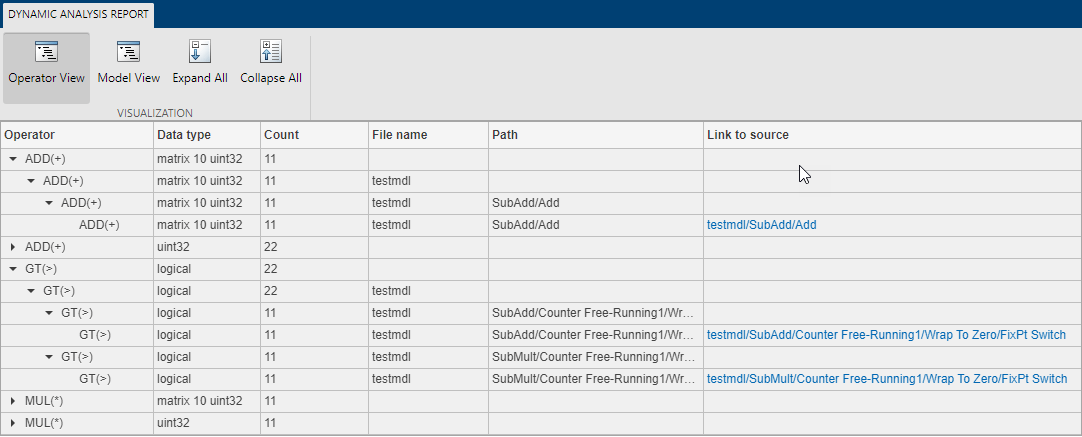socModelAnalyzer
Estimate number of operations in Simulink model
Syntax
Description
socModelAnalyzer( generates a report
with the estimated number of operations in a Simulink® model specified by modelName)modelName.
The function generates the report as a Microsoft® Excel® spreadsheet and a MAT-file. The function also provides a link to view the report in a separate dialog box.
The report includes information for each mathematical or logical operator in the
function, with individual lines for each operator and data type. For example, multiplication
with data type double and multiplication with data type
uint32 are listed separately. The report lists each instance of the
operator as a separate line. The report includes these fields.
Path– The path to the operator within the structural hierarchy of the top functionCount– The number of times the operator is executed in the designOperator– The operator usedDataType– The data type used for the output of the operatorLink– A link to the location of the operator in the function
For more information, see Using the Algorithm Analyzer Report.
socModelAnalyzer(
specifies options using one or more name-value pair arguments. For example,modelName,Name=Value)
IncludeOperator='+' specifies that the generated report only includes
'+' operator counts.
Examples
Input Arguments
Name-Value Arguments
Output Arguments
Limitations
This function does not support AUTOSAR Blockset blocks or models.
This function does not support Simulink send and receive messages.
Tips
Identical atomic subsystems are optimized by Simulink into a single function by default, which can lead to incorrect results. To avoid this process, perform one of these actions:
Clear the Treat as atomic unit parameter in the subsystem block mask.
Set the Function packaging parameter to
Nonreusable functionin the subsystem block mask.Modify one of the two subsystems so that it is not identical to the other one.

